 Enquire Now
Enquire Now
 Enquire Now
Enquire Now

PRINCE2 (PRojects IN Controlled Environments 2nd version) is a project management method recognized by private and public organizations across the world as best practice project management. Often viewed as the world’s most popular project management approach with over 2 million people world-wide having completed PRINCE2 project management training and certification.
It describes principles, people, practices and processes needed to effectively execute the start, middle and end of a project. The method is suitable for all types of projects and flexible for projects of different sizes. One of the key benefits of PRINCE2 is that it describes in detail the responsibilities of each project team member during the project’s lifecycle.
The PRINCE2 method, now in its 7th edition comprises of 5 integrated elements: Principles, People, Practices, Processes and the Project Context.
PRINCE2’s People element describes people centric activities important for the success of a project.
The Project Context element sets the organization and commercial context in which PRINCE2 can be applied, applicable delivery methods, sustainability requirements and project scale.
The PRINCE2 Process lifecycle is designed to align the project to PRINCE2’s Principles and aids the project management team’s application of PRINCE2’s Practices. It achieves this by describing a sequence of management activities for the project management team to follow from the project’s start to its closure.
Starting Up a Project |
Described as ‘pre-project’ work. It is specifically designed to answer the question: ‘Do we have a viable and worthwhile project?’ |
Initiating a Project |
The purpose of this process is to create the Project Initiation Document (PID). This is a ‘whole of life’ project management document that describes why the project is needed, what must be done, project responsibilities, when and where events will happen and how the project and its products will be controlled. |
Directing a Project |
Describes how and when the Project Board are involved in a project and their key decision points. This process also provides guidance on what information they receive to facilitate decisions on the project’s achievability and viability. |
Controlling a Stage |
Describes the ‘day to day’ management activities of a project manager to ensure the required products for a management stage are delivered within set performance objectives. |
Managing a Stage Boundary |
Defines the management and review activities occurring at the end of a management stage and the information required to support a management decision on the project’s continuation. |
Managing Product Delivery |
Defines the management activities of team managers responsible for the design, development, implementation or purchase of specialist (technical) products. |
Closing a Project |
Describes the management activities required to formally close a project. |
The 7 Practices describe important aspects of project management that need to be consistently applied throughout the project lifecycle.
| Business Case | To provide an approach for assessing the continued viability of a project |
| Organizing | To allow the formation of a project management team with clearly defined roles and responsibilities |
| Plans | To describe the different types of plans within a PRINCE2 project and how they are developed and managed |
| Progress | Enabling progress controls for senior management (Project Board) and the project manager to monitor actual achievements against planned |
| Risk | To present a clear framework for the identification, assessment, planning, implementation and communication of project risks |
| Quality | Illustrates a path for quality management within a project to achieve ‘fit for purpose’ products |
| Issues | To collect and assess issues and control changes to project baselines |
Our training will provide detailed explanations on each of the above Practices, relevant concepts, management products, roles, supporting techniques and their application across the seven processes.
The extent to which PRINCE2 Practices and Processes are applied will depend on the scale, nature, importance, complexity and risk level of the project.
There is a plethora of project management techniques that can be used to support the application of PRINCE2’s 7 Practices. For each Practice PRINCE2 makes reference to one technique specific to PRINCE2 as well as additional techniques that may be useful depending on the project context. Users can select techniques from their own experience or other sources to support the application of PRINCE2.
Some examples of PRINCE2 specific techniques:
| Business case management |
| Planning |
| Organizational design and development |
| Exception management |
| Risk and issue management |
PRINCE2 (PRojects in Controlled Environments Version 2) is a generic project management methodology helping individuals and organisations to control the start, middle and end of a project.
The method is a structured approach to project management based on 7 best practice management Principles and comprising of 7 management Processes and 7 Practices. Importantly PRINCE2 also outlines key people focused activities and encourages users to apply PRINCE2 with consideration of the project context.
Initially developed in 1989 by the CCTA (Central Computer and Telecommunications Agency) for the management of IT projects, the method was later enhanced and transformed to a generic project management model to be used by all UK government projects. This new version, known as version 2 was launched in 1996 and hence its title PRINCE2. PRINCE2 underwent a ‘refresh’ in 2009, 2017 and 2023, each time with the aim of making it more ‘user friendly’ and providing further guidance on tailoring PRINCE2 to the needs of the project environment. Our PRINCE2 training is based on the latest version of PRINCE2, known as PRINCE2 7.
Since 1996 the method has been adopted by government and private organisations across the world and has fast become the ‘de facto’ standard for project management.
Let us answer this question by asking you…
If you answered yes to one of these questions, then you will benefit from the use of PRINCE2.
Two different exams are offered, known as PRINCE2 Foundation and Practitioner certification exams. The Foundation Exam is a 1 hour, 60 question, multiple choice exam. Candidates must obtain 36 or more correct responses to gain the Foundation certification.
The Practitioner Exam is a 2.5 hour, 70 question, open book (PRINCE2 official manual only), scenario based exam. Candidates must obtain 42 or more correct responses to gain Practitioner certification.
Practitioner exam questions are presented in two styles: multiple choice and matching.
Note: Passing the Foundation exam is a pre-requisite to completing the Practitioner exam.
There is no licence fee to use PRINCE2. However, PRINCE2® is a registered trademark of PeopleCert and only accredited organisations are permitted to train and consult in the use of the method. When selecting a PRINCE2 training provider always ensure the provider you have selected is licensed and accredited. Without this accreditation the training provider’s training program will not be appropriately quality assured and may be in breach of copyright and unable to provide exams.
HiLogic is a PeopleCert accredited PRINCE2 training provider.
Here is a quick summary chart showing some high level differences between the project management standards PRINCE2 (PRojects IN a Controlled Environment) and the PMBOK (Project Management Body of Knowledge).
PRINCE2 |
PMBOK |
| Origin – United Kingdom | Origin – United States |
| Intellectual ownership: PeopleCert | Intellectual ownership: PMI |
| Worldwide adoption | Worldwide adoption |
| A principles and process based project management methodology | A knowledge based approach to project management |
| Founded on principles supported by practices and processes defining what must be done, when and how it must be done and by whom over the life of a project | Describes core practices and a wider range of techniques that can be applied to manage a project |
| Prescriptive, but tailorable | Non-prescriptive |
| Defines the roles of everyone involved in a project | Focuses on the project manager’s role |
| Candidates with a PRINCE2 certification can choose to renew within 3 years of their original certification dates, by retaking the same exam, or another exam within the same product suite and within the renewal date or collect and log CPD points as an active member of PeopleCert. | The Project Management Professional (PMP) certification is renewed by earning 60 PDU’s per 3-year cycle. |
Firstly, there is considerable misunderstanding in the marketplace about the differences between the two approaches. They are in fact not competing project management standards as many may think. If you study these standards you will find PRINCE2 and PMBOK adopt two different approaches to managing a project and by their nature they can complement each other in many ways. We feel PMBOK can be summarised as an approach that provides information on what a project manager needs to know whereas the PRINCE2 methodology demonstrates how to apply this knowledge in a structured and consistent manner. In fact section 1.1 of the 6th edition of the PMBOK guide states: “PMBOK Guide is different from a methodology.”
An example to illustrate the differences, PMBOK discusses the importance of defining roles and responsibilities in a project whereas PRINCE2 provides a model on how to set up a project team and standard role descriptions which are suitable for all types of projects. PMBOK is reliant on the project manager to develop a model for a project team structure.
Users of PMBOK are sometimes frustrated as people may incorrectly view the project manager as a ‘superman/superwoman’, that is the planner, problem solver, human resources manager and key decision maker. It may be a common belief in some sectors that the project manager is the key decision maker, however organizations today recognise that as the ultimate functional and/or financial authority is not often within the project manager but with senior management, key project decisions should then be executed by senior management. In many business environments project managers are not always best placed to make the key decisions. In PRINCE2 the responsibility of the project is with senior management and the role of the project manager is to manage the project on a ‘day by day’ basis on behalf of senior management.
If the above can be described as a criticism of PMBOK it would be fair to say a criticism of PRINCE2 is that it could probably provide more detail on knowledge areas such as scope management & contract management which PMBOK provides guidance on.
It is possible the recent popularity of PRINCE2 is because it provides a standard approach for the management of all types of projects across an organization. PRINCE2 ensures consistency of approach whereas PMBOK leaves it open to the project manager to decide on their approach which often means different approaches are adopted throughout the organization to manage its projects. Increasingly larger organisations are seeing the advantages for standardising the management of projects and view PRINCE2 as the solution for this requirement. The other advantage of PRINCE2 is its focus on the Business Case which is a management theme designed to support diligent decision making.
As PRINCE2 is a principles and process based methodology the project team does not need to be highly experienced to apply it whereas as PMBOK is a collection of knowledge areas it requires a team with management experience to design a method to support its application.
In summary, a skilled project manager is one that can apply project management knowledge areas, for example those of PMBOK with the aid of a structured methodology such as PRINCE2. A highly skilled project manager should also have the ‘know-how’ to apply project management controls that are appropriate to the scale, complexity and nature of the project.
Our training programs:
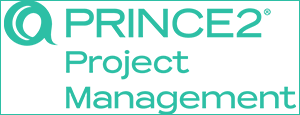
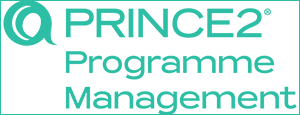
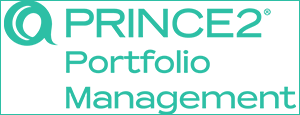
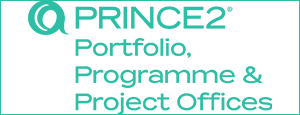






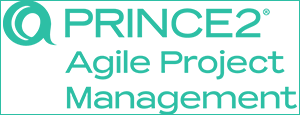

Our courses are HRDF claimable